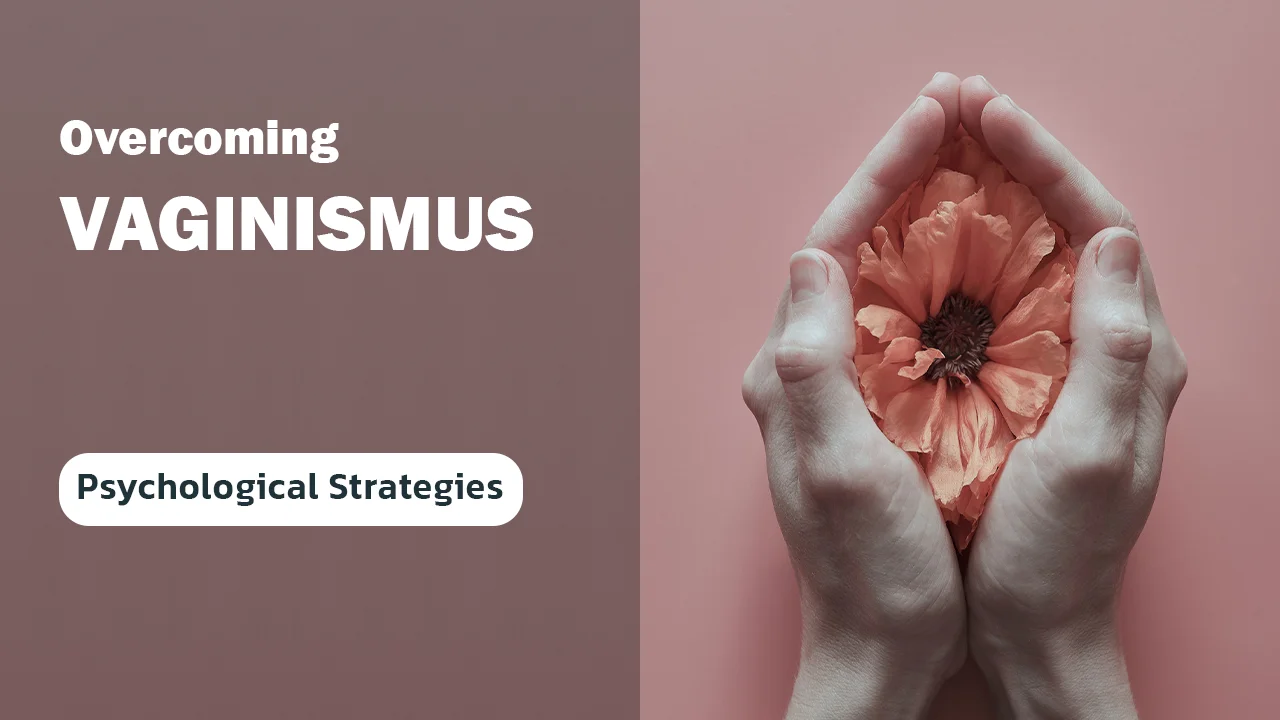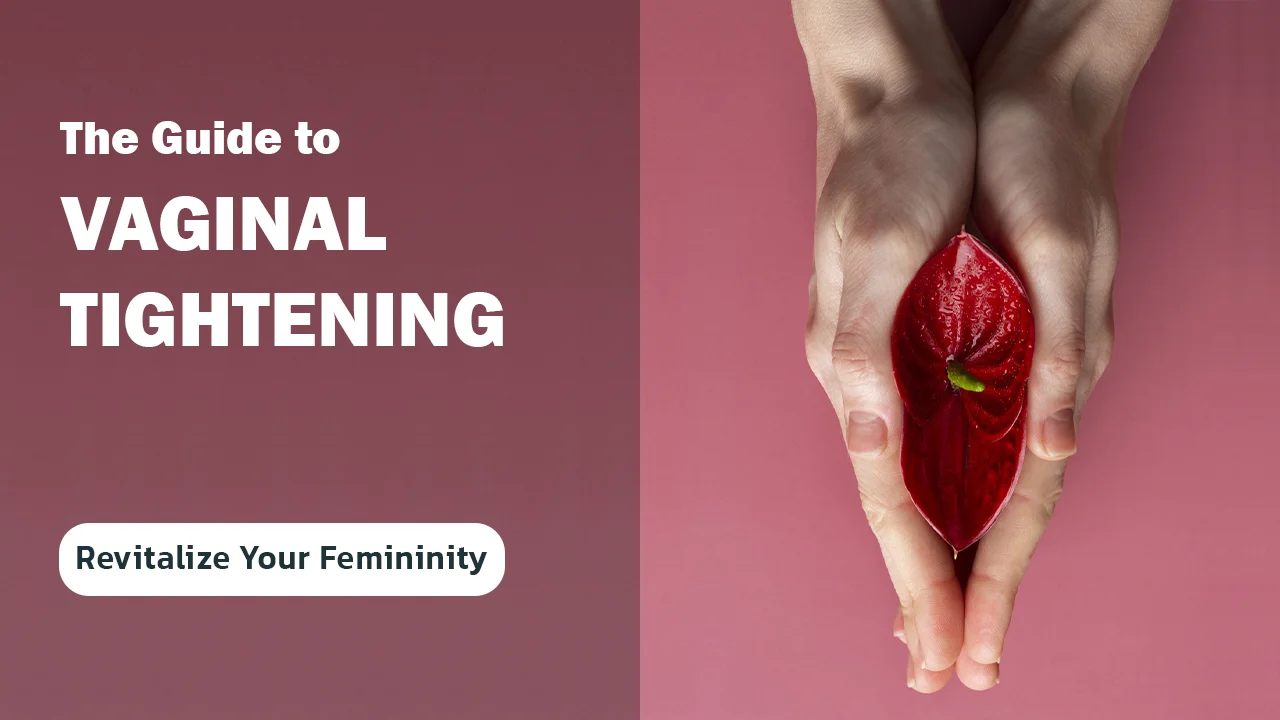In the realm of cosmetic surgery, making informed decisions is paramount, especially when it concerns…

Vaginismus stands as one of the most distressing sexual dysfunctions, marked by involuntary vaginal muscle spasms that cause pain, penetration problems, and significant emotional distress. The journey to overcoming this condition requires a multifaceted approach, prioritizing psychological strategies tailored to quick and effective relief. This article delves into the psychological underpinnings of vaginismus, unraveling the complex web of emotional, cognitive, and relational factors that contribute to its onset and persistence.
At the heart of many cases of vaginismus lies a tangled mix of fear, anxiety, and trauma. Whether stemming from past sexual abuse, deeply ingrained negative beliefs about sex, or anxiety around intimacy, these psychological barriers create a formidable obstacle to sexual health and satisfaction. Recognizing these underlying factors is crucial, as they often dictate the direction and effectiveness of treatment. Through the lens of psychological therapies such as Cognitive Behavioral Therapy (CBT) and psychosexual therapy, individuals and couples can begin to dismantle these barriers, paving the way for a healthier and more fulfilling sexual experience.
Psychological treatments for vaginismus extend beyond mere symptom management; they aim to address the root causes of the condition. Cognitive Behavioral Therapy (CBT), for instance, offers a structured approach to changing negative thought patterns and behaviors associated with sexual activity, reducing anxiety and improving sexual function. Similarly, psychosexual therapy provides a safe space to explore emotional and relational aspects of vaginismus, offering education, support, and coping strategies tailored to each individual’s experience. These therapies underscore the importance of a compassionate, patient-centered approach to treatment, acknowledging the profound impact of psychological factors on sexual health.
Education plays a pivotal role in overcoming vaginismus. By demystifying the condition and its treatments, individuals can reclaim control over their bodies and sexual experiences. Support groups and online forums also offer a community of understanding and empathy, where sharing experiences and strategies can further empower those affected. Moreover, involving partners in the treatment process fosters a deeper connection and mutual support, crucial for navigating the challenges of vaginismus together.
Understanding Vaginismus: A Comprehensive Overview
What is Vaginismus?
Vaginismus is a condition characterized by involuntary contractions of the vaginal muscles, which can cause discomfort, pain, and difficulty with vaginal penetration, including sexual intercourse, tampon insertion, and gynecological exams. This reflexive muscle tightening is often a response to the fear of pain or penetration, though it can occur without a clear cause. Understanding vaginismus is the first step toward addressing it, breaking down myths and misconceptions that surround this condition. It’s crucial to acknowledge that vaginismus is not “all in the head” but a real, physical manifestation of underlying psychological or physical triggers.
Symptoms and Diagnosis
The primary symptom of vaginismus is pain during attempted vaginal penetration due to muscle spasms. Other indicators may include difficulty using tampons and discomfort during gynecological exams. Diagnosis involves a careful medical history, a discussion of symptoms, and a physical exam to rule out other conditions that could cause similar symptoms. The understanding and compassionate approach of healthcare providers is key to a correct diagnosis, as the condition can be sensitive and challenging for those experiencing it.
Common Causes and Contributing Factors
Vaginismus can stem from various causes, including psychological factors such as anxiety, fear, or traumatic experiences, as well as physical factors like infections or conditions that cause painful intercourse. The complexity of vaginismus lies in its ability to be both a cause and effect of anxiety and fear related to penetration. For many, the anticipation of pain perpetuates the cycle of muscle tension and discomfort, making it essential to address both the physical and psychological aspects of the condition.
Psychological Underpinnings of Vaginismus
The Role of Anxiety and Fear
Anxiety and fear are central to the experience of vaginismus for many individuals. The anticipation of pain, combined with negative beliefs about sex or traumatic past experiences, can trigger a protective, muscular response. These psychological barriers are not insurmountable, however. By understanding the role of anxiety and fear, individuals can begin to work through these emotions, reducing their impact on sexual health and wellbeing.
Impact of Past Trauma and Sexual Abuse
Past trauma and sexual abuse are significant factors that can contribute to the development of vaginismus. The body’s response to these experiences can be deeply ingrained, leading to a protective mechanism that manifests as vaginismus. Addressing these past traumas is a delicate process, requiring patience, understanding, and often the support of professionals trained in trauma-informed care. The healing journey is personal and varied, emphasizing the importance of a supportive therapeutic relationship.
Cultural and Religious Influences
Cultural and religious backgrounds can also play a role in the development of vaginismus. Negative or restrictive beliefs about sex, shame, and guilt can contribute to a fear of sexual activity. Unpacking these deeply held beliefs can be challenging, but it’s a crucial step in overcoming vaginismus. Education, open discussions, and counseling can help individuals reconcile these influences with their desires for healthy sexual relationships.
Pelvic Floor Physical Therapy: A Cornerstone of Treatment
Introduction to Pelvic Floor Therapy
Pelvic floor physical therapy is a specialized form of physical therapy that focuses on the muscles, ligaments, and tissues of the pelvic floor. For individuals with vaginismus, this therapy aims to strengthen and relax the pelvic floor muscles, reducing involuntary contractions and easing pain during penetration. The therapy involves exercises tailored to the individual’s needs, often including techniques for muscle relaxation, stretching, and strengthening. The goal is to improve pelvic floor function, which can lead to a significant improvement in the symptoms of vaginismus and overall sexual health.
Exercises and Techniques for Relaxation
The exercises and techniques used in pelvic floor physical therapy vary widely, but they often include Kegel exercises, breathing techniques, and the use of vaginal dilators. Kegel exercises involve contracting and relaxing the pelvic floor muscles, which can help in gaining control over these muscles. Breathing techniques, on the other hand, focus on deep, diaphragmatic breaths to promote relaxation and ease muscle tension. Vaginal dilators may also be used to gradually accustom the vaginal muscles to penetration, helping to reduce fear and anxiety associated with sex.
The Power of Cognitive Behavioral Therapy (CBT)
Understanding the Mind-Body Connection
Cognitive Behavioral Therapy (CBT) is a form of psychotherapy that addresses the interconnectedness of thoughts, feelings, and behaviors. In the context of vaginismus, CBT aims to identify and challenge negative thoughts and beliefs about sex, pain, and penetration that contribute to the condition. By addressing these cognitive aspects, CBT can help reduce the anxiety and fear that lead to muscle contractions, facilitating a more positive and relaxed approach to sexual activity.
How CBT Addresses Anxiety and Fear Associated with Vaginismus
CBT techniques, such as exposure therapy and cognitive restructuring, can be particularly effective in treating vaginismus. Exposure therapy gradually introduces the concept of penetration in a safe and controlled environment, helping to desensitize individuals to the sensations and reduce fear. Cognitive restructuring, meanwhile, involves identifying and challenging negative thoughts, replacing them with more positive and realistic ones. Through these techniques, CBT can offer a powerful tool for overcoming the psychological barriers associated with vaginismus, leading to improved sexual experiences and relationships.
Navigating the Path with Vaginal Dilator Therapy
What are Vaginal Dilators?
Vaginal dilators are medical devices designed to assist individuals experiencing vaginismus in becoming more comfortable with vaginal penetration. These dilators, which come in varying sizes, are used to gradually stretch the vaginal muscles, reducing the discomfort and pain associated with tightness and involuntary spasms. The process involves starting with the smallest dilator and gradually working up to larger sizes, allowing for a gentle and progressive adaptation to the sensation of penetration. This therapy is often recommended as part of a comprehensive treatment plan that includes psychological support and physical therapy.
Step-by-Step Guide to Using Dilators Effectively
The use of vaginal dilators follows a systematic approach to ensure comfort and effectiveness. Initially, individuals are encouraged to become familiar with the dilator by holding it and understanding its use. Relaxation techniques are employed before insertion to ease the process. The dilator is then gently inserted to a comfortable depth, with the individual in control of the process. Regular practice is key, with the duration and frequency of use gradually increasing. Throughout this therapy, guidance from a healthcare professional can provide support and ensure the technique is executed safely and effectively.
The Role of Psychosexual Therapy in Overcoming Vaginismus
Psychosexual Challenges and Therapeutic Interventions
Psychosexual therapy addresses the psychological and emotional aspects of sexual dysfunction, providing a space for individuals or couples to explore their sexual concerns. For those with vaginismus, psychosexual therapy can offer insights into the emotional blocks or relational issues contributing to the condition. Through therapy, individuals learn to navigate their fears, improve communication with partners, and rebuild intimacy. The therapeutic process often involves education about sexual response and exercises designed to enhance comfort with sexual activity.
Creating a Safe and Supportive Environment for Healing
A critical aspect of psychosexual therapy is the creation of a safe, non-judgmental space where individuals can openly discuss their fears, desires, and experiences. This environment fosters trust and encourages the exploration of sensitive topics that may be difficult to address elsewhere. Therapists skilled in psychosexual issues can guide individuals through the process of understanding and overcoming vaginismus, emphasizing the importance of patience, communication, and mutual support in achieving a healthy sexual relationship.
Building a Supportive Relationship with Your Partner
Communication and Understanding
Effective communication is foundational in navigating the challenges of vaginismus within a relationship. Partners play a crucial role in the treatment process, offering emotional support and understanding. It’s vital for both individuals to engage in open, honest dialogues about their feelings, fears, and desires. Such conversations can demystify concerns, align expectations, and foster a deeper emotional connection. Emphasizing empathy and patience helps in creating a supportive environment where healing and progress can flourish.
Engaging Your Partner in the Treatment Process
Involving your partner in the treatment process can be immensely beneficial. Whether attending therapy sessions together, practicing relaxation techniques, or learning about the use of vaginal dilators, shared experiences can strengthen the relationship and enhance mutual support. This collaborative approach not only aids in overcoming the physical aspects of vaginismus but also in addressing any emotional or psychological barriers to intimacy. Encouraging your partner to be an active participant in the journey can lead to a more understanding, compassionate, and intimate partnership.
Preventing Relapse: Maintaining Gains and Managing Setbacks
Strategies for Sustained Improvement
Maintaining the gains made through treatment for vaginismus requires ongoing effort and mindfulness. Adopting a proactive approach to wellness, including regular pelvic floor exercises, continued use of relaxation techniques, and open communication with your partner, can help prevent relapse. Additionally, staying informed about your condition and being aware of potential triggers can empower you to manage symptoms effectively should they reoccur.
When to Seek Further Help
Understanding that setbacks can be part of the recovery process is important. If you experience a relapse or find that symptoms persist despite treatment, seeking further help is crucial. This might involve returning to therapy, exploring additional treatment options, or consulting a specialist. Remember, vaginismus is a treatable condition, and with the right support and resources, individuals can achieve lasting improvements in their sexual health and relationships.
Overcoming vaginismus is a journey that involves understanding its multifaceted nature, engaging in targeted treatments, and fostering a supportive environment for healing. Through this guide, we’ve explored the significance of recognizing the psychological roots of vaginismus, leveraging therapeutic interventions like cognitive-behavioral therapy and psychosexual counseling, and employing practical techniques such as pelvic floor therapy and the use of vaginal dilators. Central to this journey is the role of communication and partnership, underscoring the importance of shared experiences and mutual support in overcoming challenges.
As we conclude, it’s important to remember that while the path to overcoming vaginismus may require patience and persistence, it is paved with hope and the potential for recovery. The strategies discussed offer a beacon of light for those navigating this condition, promising a future where sexual health and intimacy are within reach. With the right information, support, and treatment approach, overcoming vaginismus is not just a possibility but a realistic and achievable goal.



